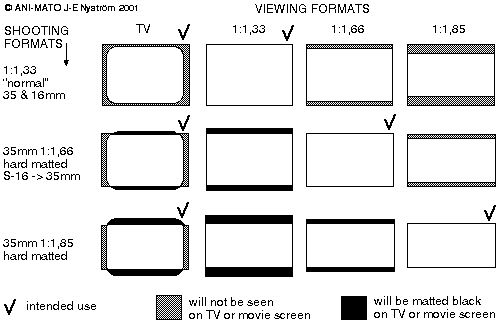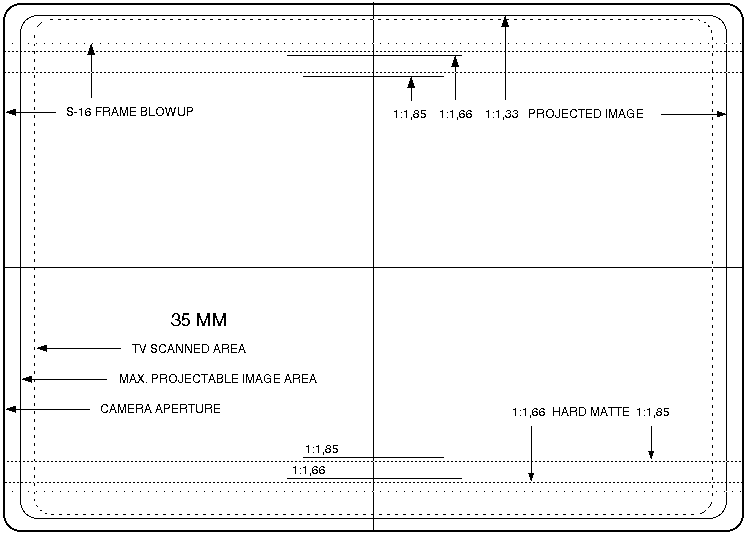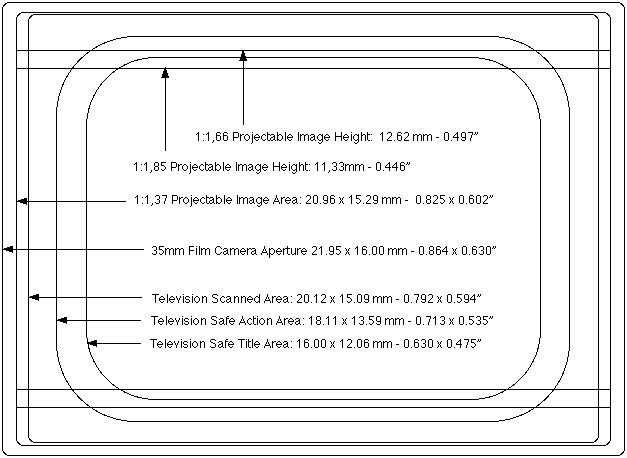NOTE: They apply to 35mm film. 16mm and Super-16mm areas are only slightly different, so if you match 16mm to 35mm, and the width of Super-16 to the width of 35mm (camera apertures in all cases), you're not far off!

As you can see, a 1:1,66 or 1:1,85 film will have black stripes at the top and bottom of the TV frame, unless the film is tranferred "pan-and-scan", i.e. enlarged to fill the entire screen. This is seldom done with "flat" images, but often with anamorphic "scope" films - these are optically "squeezed" by shooting through a special lens.

The markings on the diagram above shows all the important camera, projection and TV scanning areas. Below are the exact dimensions of some of the areas, and also the "safe" areas for TV - i.e the areas iside which all action (or titles) should be kept. I consider these "safe areas" rather conservative. Modern TV sets usually do not cut off as much. But they are drawn here accoding to the 1992 standard...

Note: I have also prepared exact "field guides" for 35, S-16 and 16mm camera use. You can find these on the "Bolex Finder" page.